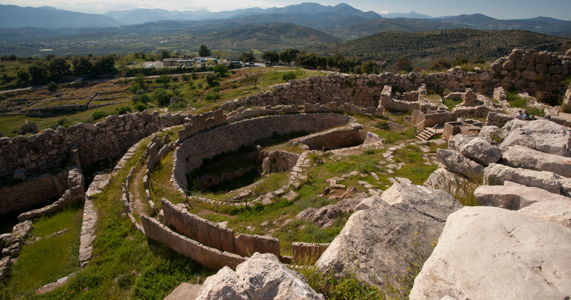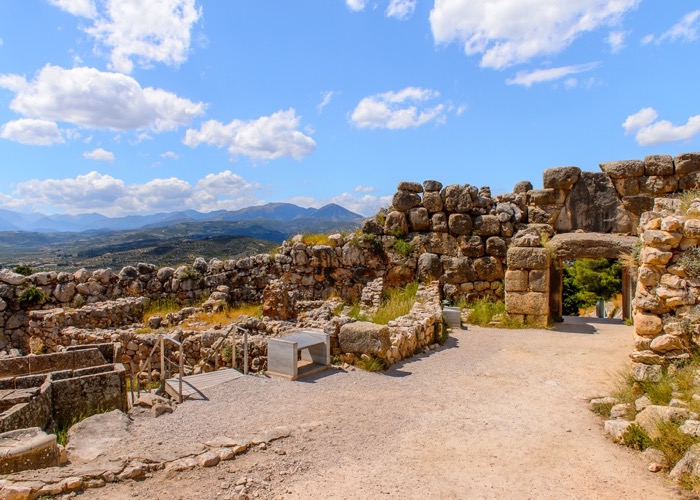The archaeological site of Mycenae, located in the northeastern Peloponnese of Greece, offers a striking glimpse into the grandeur of the Mycenaean civilization (16th–12th century BCE), one of the most influential cultures of the ancient Aegean world. Mycenae’s monumental ruins, its connection to the Trojan War myth, and its archaeological treasures underscore its significance as both a cultural and historical hub.

Iconic Structures and Advanced Engineering
Mycenae’s Lion Gate, the royal palace, and the Treasury of Atreus (Tomb of Agamemnon) are among its most iconic features. The Lion Gate, with its monumental relief of two lions, is one of the earliest examples of European sculpture, symbolizing the city’s power. The royal palace, with its complex design, frescoes, and storerooms, highlights the wealth and sophistication of Mycenae’s ruling elite. Meanwhile, the Treasury of Atreus, with its massive corbelled dome, stands as an architectural marvel, showcasing the Mycenaeans’ advanced building techniques and their reverence for royal burials.

The city’s Cyclopean walls, made from massive limestone blocks, reflect Mycenae’s need for defense and protection. These walls, believed to have been built by the legendary Cyclopes, were essential for safeguarding the city against external threats and solidifying its position as a fortified power in the ancient world.
Mythological Legacy: The Trojan War and King Agamemnon
Mycenae’s mythological importance is rooted in its connection to the Trojan War. King Agamemnon, the legendary ruler of Mycenae, led the Greek forces in the war against Troy. According to myth, Agamemnon’s tragic fate—his murder by his wife, Clytemnestra, upon his return from Troy—is immortalized in Aeschylus’s “Oresteia”. This tale, alongside others connected to Mycenae, illustrates the city’s central role in the epic narratives of ancient Greece, linking it not only to real historical events but also to the larger mythological fabric of the Greek world.

Archaeological Discoveries: A Glimpse into Mycenaean Life
Excavations at Mycenae have uncovered remarkable artifacts, including golden death masks, jewelry, and weapons from the Grave Circles. These treasures provide insight into Mycenaean society, highlighting their wealth, artistic craftsmanship, and the importance of burial rituals. The Mask of Agamemnon, found in one of these graves, remains one of the most iconic symbols of Mycenaean culture.

Conclusion: Mycenae’s Enduring Legacy
Mycenae’s monumental architecture, its connection to the Trojan War legends, and its wealth of archaeological treasures firmly establish it as a cornerstone of Greek civilization. More than just a historical site, Mycenae is a testament to the mythological and cultural forces that shaped the ancient world. Today, it continues to inspire admiration for its architectural feats, its powerful myths, and its profound influence on later Greek thought and culture.

